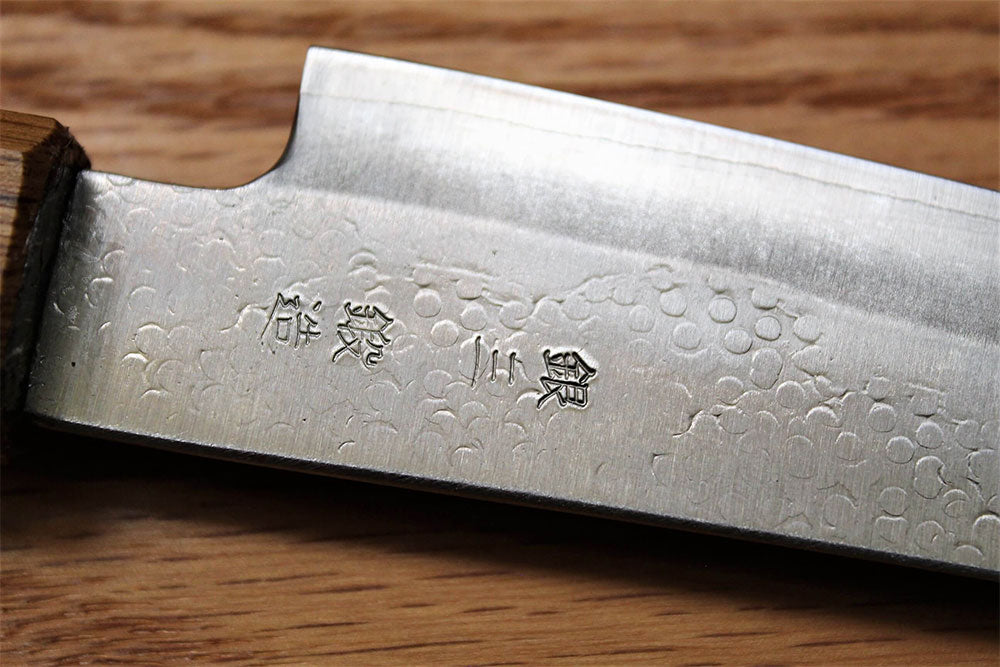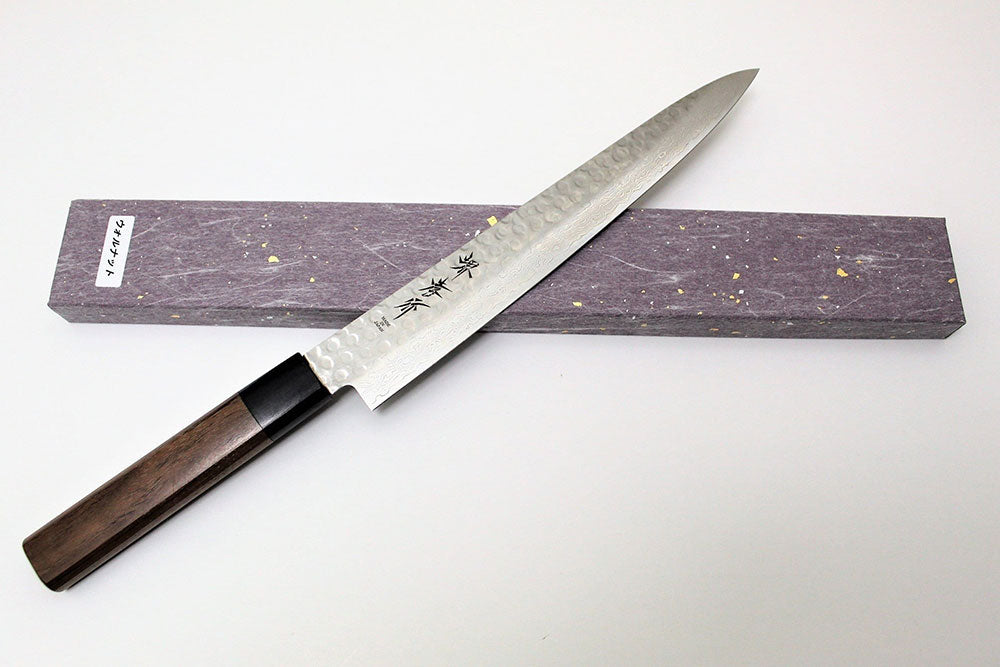
What Is A Kiritsuke Knife Used For?
Walk into any professional Japanese kitchen and you'll witness a rhythm, a precision, and a reverence for tools that feels almost ceremonial. Among these tools, few carry the quiet authority of the kiritsuke knife. With its long, razor-sharp blade, the kiritsuke offers unmatched control, making it a prized choice for chefs who prioritize skill and discipline.
So, what is a kiritsuke knife used for? It’s not a blade for the casual cook who grabs the first utensil within reach. This knife serves a specific purpose and has a corresponding shape.
Its long, straight edge with a slightly curve towards the tip, combined with a pointed tip, makes it ideal for detailed slicing and refined preparation. From slicing sashimi to breaking down root vegetables, the kiritsuke gives you a professional-level edge.
What Is a Kiritsuke Knife Used for in Japanese Cooking?
The kiritsuke first gained attention in traditional Japanese kitchens, where it served as a multi-purpose knife for seasoned chefs.
Historically, only the head chef (or itamae) could use one. That’s because the kiritsuke requires exact control. It combines the traits of two highly specialized knives: the gyuto, a Western-style chef’s knife, and the yanagiba, a single-bevel slicing knife used for sashimi. This hybrid form allows it to handle both meat and fish with finesse.
The blade typically measuring between 8 and 12 inches, and the pointed tip serves a practical purpose. It gives the user a way to score, carve, or execute precise movements without switching tools.
In Japanese kitchens, the kiritsuke is used to slice raw fish into thin, uniform pieces, chiffonade herbs without bruising, and make clean cuts on soft proteins like duck or tuna.
Why the Kiritsuke Knife Outperforms in Precision Tasks
You won’t find the kiritsuke replacing a full set of knives. It doesn’t aim to. Instead, it steps in where other blades fall short.
A gyuto offers the versatility and curve needed for fast chopping motions, but falls short when it comes to delivering razor-straight slices. A santoku handles vegetables with ease, yet lacks the length and finesse necessary for precise fish cuts. The kiritsuke steps in as the perfect hybrid, combining reach with refined control in a single blade.
With the kiritsuke, the blade glides effortlessly through ingredients. This smooth, continuous motion protects delicate textures, avoids bruising, and leaves ingredients pristine for plating. Whether working with sashimi-grade fish, tender tomatoes, or perfectly blanched greens, the kiritsuke transforms into a tool of surgical precision.
The Blade Design Behind the Kiritsuke’s Precision
The kiritsuke features a straight spine paired with a gentle curve near the tip, creating a geometry that rewards consistency and skill. Its pointed tip remains assertive and makes it perfect for detail-oriented tasks like removing silver skin or crafting intricate garnishes. Meanwhile, the heavier heel provides the force needed to handle firmer produce or proteins that require extra pressure.
Most kiritsuke knives are forged from high-carbon steel, sometimes layered to form Damascus patterns. That layered construction helps stabilize the blade, maintain a sharper edge for longer, and prevent corrosion. The handle often follows the traditional Japanese octagonal or D-shape design. It presents a secure grip and tactile feedback during delicate cuts.
When to Reach for the Kiritsuke
Turn to the kiritsuke when your ingredients demand careful handling. Whether you’re slicing raw tuna for sashimi, making flawless cuts in a roulade, or preparing vegetables for an elegant presentation, this knife excels. It’s particularly valuable when working with delicate items like soft tofu, tender herbs, or richly marbled fish – ingredients where any flaw becomes immediately visible.
The flat edge moves cleanly through food without tearing, while the pointed tip provides precise control. When you need consistently sharp, accurate cuts that reflect practiced technique, the kiritsuke proves its worth on the board.
How the Kiritsuke Knife Supports Every Cut
The real power of the kiritsuke lies in its ability to influence the final presentation. Uniform cuts don’t just cook evenly; they look refined. When each slice of fish or sliver of radish lands on the plate with symmetry and balance, your preparation stands out.
Caring for the Kiritsuke
Owning a kiritsuke carries a level of responsibility. Proper care allows you to get the best performance from this precision tool. This isn’t a knife to leave unattended in a drawer. After each use, rinse and dry it immediately to prevent rust and maintain the blade’s integrity. Always hand wash it and never place it in the dishwasher.
Like most high-end knives, a kiritsuke should be stored carefully. Use a magnetic knife strip or a wooden block, as this will protect the blade from unnecessary wear and tear.
Regular honing is a must to maintain the blade’s sharpness. While the kiritsuke is a resilient knife, it does need occasional sharpening, especially if you use it frequently. Keep the edge in good shape, and it will serve you for many years to come.
A Knife That Rewards Skill
A kiritsuke knife is ideal for anyone seeking to enhance their kitchen skills. It offers versatility and precision in every cut. Looking to support your culinary skills? Hasu-Seizo offers a curated collection of artisan Japanese knives.
Explore our new arrivals and find the perfect blade to upgrade your kitchen. We feature renowned brands such as Sakai Takayuki, Shigeki Tanaka, and Yasuhiko Fujiwara, renowned for their exceptional craftsmanship.
At Hasu-Seizo, we’ve built our collection around that standard. Our kiritsuke knives feature professional forging from Japan’s most respected makers. Each one represents generations of technique and steel craftsmanship.
If you’re ready to work with a tool that sharpens your technique and respects the food, explore our curated selection. We’re here to help you find the knife that fits your hand and your vision.


